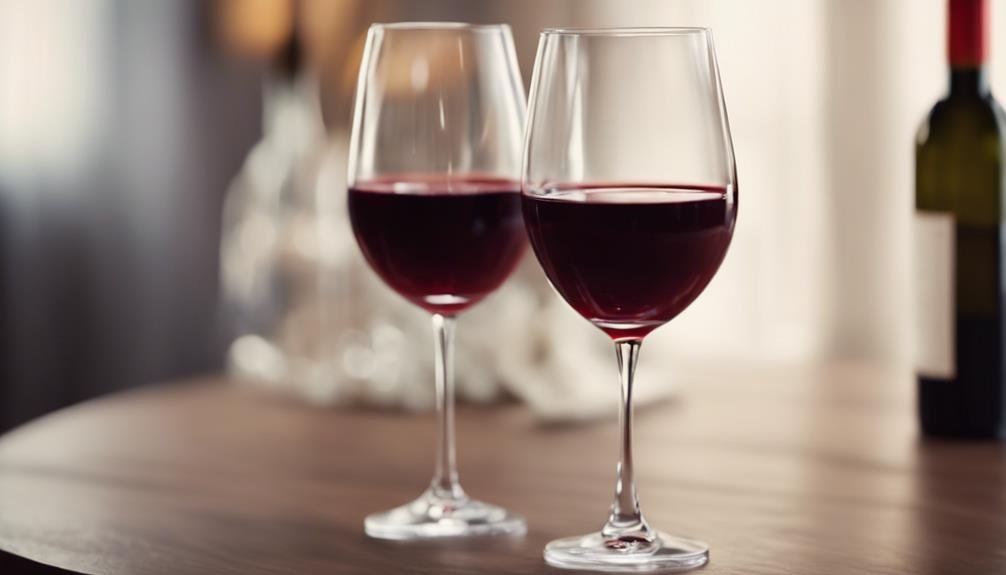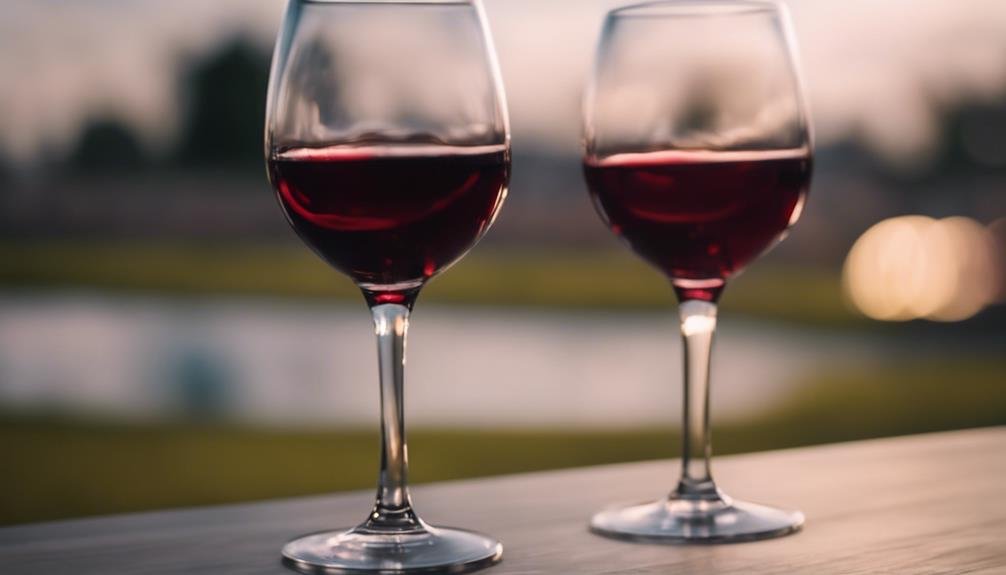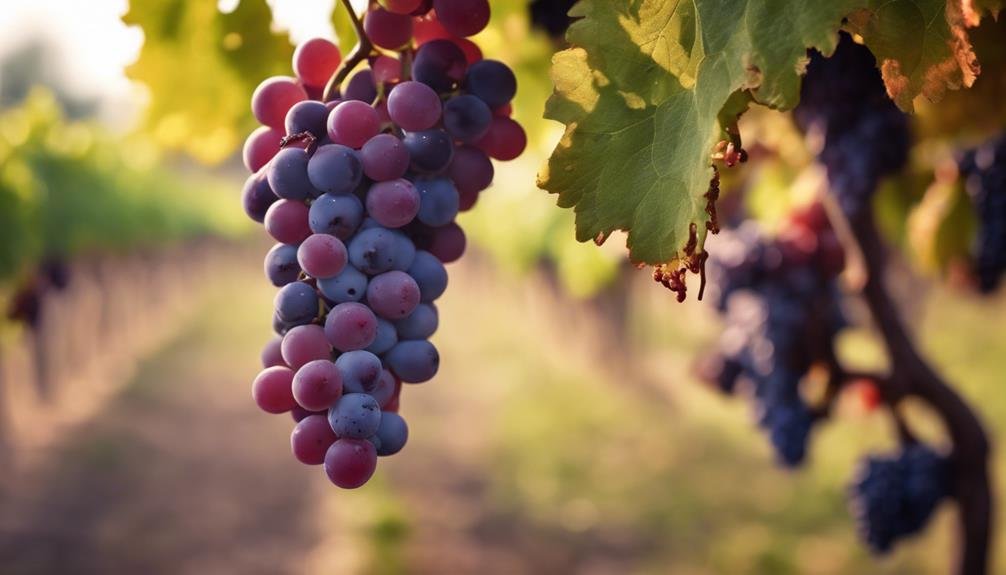Young wine surpasses old wine in antioxidant levels due to higher concentrations of health-promoting compounds like anthocyanins and condensed tannins. Antioxidants in wine are primarily derived from grape varietals during fermentation, with different grapes contributing varying levels. Aging wine can lead to reduced antioxidant levels, particularly affecting anthocyanins. Acidity plays a vital role in influencing antioxidants in wine, with high-acid wines stabilizing them over time. Tannins, found in grape skins, contribute to antioxidant properties, with young wines containing more condensed tannins offering beneficial effects. Understanding these factors is essential in evaluating the antioxidant benefits of wine.
Antioxidant Levels in Young Wine
Having higher antioxidant levels compared to old wines, young wines offer a more potent source of health-promoting compounds like anthocyanins and condensed tannins. During wine fermentation, these antioxidants are derived from grape varietals, with young wines containing the highest levels of condensed tannins, which have been linked to various health benefits.
Different grape varietals contribute varying levels of antioxidants, impacting the overall antioxidant content of the wine. The process of aging wine can lead to a reduction in antioxidant levels, particularly affecting anthocyanins. Opting for young wines over old ones may provide a higher intake of these beneficial compounds.
Understanding the antioxidant levels in young wines can help individuals make informed decisions when selecting wines based on their health preferences.
Impact of Aging on Wine Antioxidants
Aging of wine notably affects the levels of antioxidants present, thereby influencing the potential health benefits associated with consuming wine. As wine ages, the antioxidant content can change due to various chemical reactions taking place within the wine.
For example, the levels of anthocyanins, which are powerful antioxidants, can decrease substantially over time. Additionally, the stability of antioxidants like condensed tannins may be impacted by aging effects. Understanding these changes is important in evaluating the antioxidant benefits that aged wine can offer.
While young wine tends to have higher antioxidant levels, the aging process adds complexity to the antioxidant profile of wine, highlighting the nuanced relationship between aging effects and antioxidant benefits.
Influence of Acidity on Antioxidants

Antioxidant levels in wine are significantly influenced by the acidity present, with high-acid wines being recognized for their ability to stabilize antioxidants over time. The benefits of acidity extend to antioxidant reactions, where the presence of acids like tartaric and malic acids can help preserve antioxidants in wine.
As wine ages, acidity plays an important role in maintaining the antioxidant content, as higher acid levels slow down the degradation of antioxidants. This acidity benefits the wine by aiding in the antioxidant preservation process, ensuring that the wine retains its health-promoting properties over an extended period.
Understanding the influence of acidity on antioxidants provides valuable insights into how different wine compositions can affect the overall health benefits derived from consuming wine.
Role of Anthocyanins in Wine Aging
Anthocyanins in wine play an essential role in the maturation process, contributing to both the color and antioxidant properties of the beverage. These compounds are responsible for the red, purple, and blue hues in red wine and are known for their health benefits due to their antioxidant properties. Understanding the role of anthocyanins in wine aging is important for wine preservation techniques and maximizing health benefits through anthocyanin absorption. Maintaining anthocyanin stability is necessary for ensuring the antioxidant properties remain intact as the wine ages. The table below illustrates the significance of anthocyanins in wine aging and their impact on health benefits:
| Aspect | Importance | Impact on Health Benefits |
|---|---|---|
| Anthocyanin Stability | Preserves antioxidants in wine | Enhances health benefits |
| Wine Preservation | Maintains color and antioxidant content | Maximizes health advantages |
| Health Benefits | Linked to antioxidant properties | Supports overall well-being |
Tannin Content in Young Vs. Old Wine

The comparison of tannin content between young and old wines reveals significant differences in their composition. Tannins are polyphenolic compounds found in grape skins, seeds, and stems that contribute to the astringency and mouthfeel of wine.
Young wines typically exhibit higher levels of condensed tannins compared to older wines. These tannins can provide antioxidant properties and have potential anti-inflammatory effects.
The importance of age effect on tannin content in wine cannot be overstated, as tannins can polymerize over time, leading to a smoother taste but potentially lower antioxidant levels in aged wines.
Understanding the tannin comparison between young and old wines can offer insights into the health benefits and sensory characteristics associated with different stages of wine aging.
Frequently Asked Questions
Does the Grape Variety Affect Antioxidant Levels in Young Wine?
Grape variety plays a significant role in determining antioxidant levels in young wine. Understanding the aging potential of different grape varieties is essential for harnessing the best antioxidant benefits. Research on grape-specific antioxidants can enhance wine's health profile.
How Does the Winemaking Process Impact Antioxidant Preservation in Young Wine?
In winemaking, the fermentation process plays a pivotal role in determining antioxidant preservation in young wine. The duration of aging further influences the concentration of beneficial compounds. Understanding these factors is essential for maximizing the health benefits of wine.
Are There Specific Storage Conditions That Optimize Antioxidant Levels in Young Wine?
Optimizing antioxidant levels in young wine involves meticulous temperature control to prevent oxidation, minimizing oxygen exposure, storing in dark conditions to shield from light exposure, and selecting appropriate bottle types. These factors safeguard wine's health-promoting compounds.
Can Blending Different Young Wines Enhance Overall Antioxidant Content?
Blending young wines can enhance overall antioxidant content through synergistic effects. Debunking myths about age vs. antioxidants, blending benefits are evident. Nuanced factors influence antioxidant levels, supporting the idea that blending can maximize health benefits in wine consumption.
Do Organic or Biodynamic Practices Influence Antioxidant Levels in Young Wine?
Organic and biodynamic practices can influence antioxidant levels in young wine through soil composition, climate, harvest timing, and fermentation techniques. These factors impact the development and concentration of antioxidants, contributing to the wine's overall health benefits.
Conclusion
In the world of oenology, young wine reigns supreme in the domain of antioxidants, boasting unparalleled levels that overshadow their aged counterparts.
The preservation of anthocyanins, heightened acidity, and abundance of condensed tannins in young wines contribute to this antioxidant superiority.
While the debate rages on, one thing remains clear – when it comes to antioxidant content, young wine stands tall as the undisputed champion.
